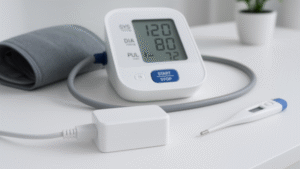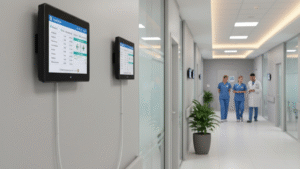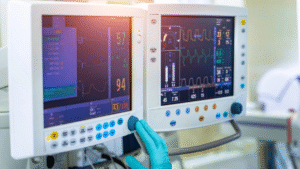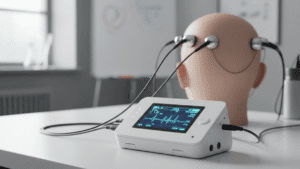As the global medical industry evolves with increasing demand for high-performance, safe, and intelligent equipment, the market for medical power supplies is experiencing significant transformation. These specialized power sources—ranging from compact adapters for portable devices to high-efficiency modules for imaging systems—are foundational to modern healthcare.
In 2025, the medical power supply market is shaped by key forces: technological innovation, regulatory updates, demographic shifts, and strategic regional developments, especially in China, which has emerged as both a major consumer and producer.

1. Global Market Overview and Growth Projections
The global medical power supply market is projected to reach USD 2.6–3.2 billion by 2025, growing at a CAGR of approximately 6–8% from 2022. Key growth drivers include:
Rising prevalence of chronic diseases: Increasing cases of cardiovascular disease, diabetes, and cancer necessitate advanced monitoring and treatment equipment—many of which rely on dedicated power supplies.
Growing aging population: Aging populations in North America, Europe, Japan, and China are driving demand for home healthcare devices, portable diagnostics, and telemedicine—segments heavily reliant on compact, reliable power supplies.
Digital healthcare transformation: Remote patient monitoring, AI-powered diagnostics, and wearable health devices are creating new requirements for power supply design, especially in the low-wattage and battery-backed categories.
Demand for safer, more efficient power conversion: Efficiency standards and tighter safety regulations (IEC 60601-1, 2x MOPP) are pushing manufacturers to upgrade product lines with intelligent, high-efficiency solutions.
North America and Europe remain leading markets, supported by advanced healthcare infrastructure and strict regulatory enforcement. However, Asia-Pacific—especially China—is emerging as the fastest-growing region, not only in consumption but also in innovation and production.
2. China: From Manufacturing Base to Innovation Leader
China has rapidly advanced from being a low-cost manufacturing hub to becoming a strategic innovator and growth engine in the global medical device and power supply market.
Key drivers of China’s medical power supply market include:
Policy support: The “Healthy China 2030” initiative and medical equipment localization goals encourage domestic R&D and production of core medical components, including power supplies.
Boom in medical electronics: The post-COVID healthcare expansion, telehealth adoption, and hospital equipment upgrades have fueled demand for high-quality power supply solutions.
OEM and ODM strengths: Leading Chinese companies such as Quankang, offer standard and customizable medical power solutions at globally competitive levels.
Growing exports: Chinese-made medical power supplies are increasingly exported to Southeast Asia, the Middle East, and Eastern Europe, driven by cost advantage and improved quality standards.
According to recent data, China’s domestic medical power supply market size reached RMB 4.5–5.5 billion in 2024, with projections exceeding RMB 7 billion by 2027. Major applications include ventilators, infusion pumps, patient monitors, diagnostic imaging, and home-use devices such as electric breast pumps and portable ECGs.
3. Product Innovation and Technology Trends
In 2025, the focus of R&D in medical power supplies lies in miniaturization, intelligence, energy efficiency, and safety.
a. Miniaturized & Lightweight Designs
Compact, high-density AC-DC converters and modular power systems are being developed to fit smaller medical devices such as wearable monitors, handheld imaging tools, and smart diagnostic equipment.
b. High-Efficiency and Low Standby Power
The use of GaN and SiC components is increasing to improve conversion efficiency (>92%) and reduce thermal footprints. Many designs now support standby power below 0.1W, complying with global eco-design standards.
c. Smart Power Management
Modern power supplies feature digital control interfaces (I²C, PMBus), allowing real-time diagnostics, telemetry, and system integration—especially important for high-end imaging systems and ICU equipment.
d. Battery Integration and UPS Functions
Power backup is critical in medical scenarios. Hybrid power modules combining AC and lithium battery input ensure continuous operation during grid failures.
e. Compliance with Home Healthcare Standards
IEC 60601-1-11 compliance is becoming mandatory for home-use devices, driving demand for Class II power supplies with reinforced isolation and rugged enclosures.
4. Market Segmentation by Application and Type
The medical power supply market is segmented by:
a. Application
Diagnostic Equipment: CT, MRI, ultrasound – require high wattage and redundancy.
Therapeutic Equipment: Lasers, surgical devices – demand isolation, high-precision voltage.
Monitoring Systems: ECG, EEG, patient monitors – need ultra-low noise and compact designs.
Home Healthcare: Nebulizers, infusion pumps, breast pumps – favor Class II, portable, and low leakage solutions.
b. Type
AC-DC External Adapters (Wall/DIN/Desktop)
Open Frame/Internal Power Modules
Encapsulated/Enclosed Power Supplies
Battery Charger Modules and DC-DC Converters
Among these, external Class II adapters (such as 12V 2A, 24V 1.5A models) are seeing rapid growth, especially for home and portable devices. China-based manufacturers like Quankang are gaining attention for offering certified, compact, and cost-effective Class II power adapters.
5. Competitive Landscape and Key Player
In China, competitive momentum is building with companies like:
Quankang – Specializes in medical-grade external adapters, Class II designs, and ODM customization for home healthcare and portable diagnostics.
Quankang compete on certification support, customization flexibility, price-performance balance, and after-sales service.
6. Challenges and Opportunities Ahead
Challenges
Navigating global safety and EMC certifications is complex and costly for manufacturers.
Increasing raw material and component costs (especially semiconductors) could pressure profit margins.
Supply chain disruptions and geopolitical shifts add uncertainty to global sourcing.
Opportunities
Expanding demand for telehealth and personal healthcare devices.
Growing emphasis on green and energy-efficient power designs.
Rising demand from developing regions seeking cost-effective yet certified medical equipment.
AI and IoT integration: As devices get smarter, so will their power supplies.
Conclusion: Powering the Future of Global Healthcare
In both the global and Chinese medical markets, power supplies are no longer viewed as commodity components—they are strategic enablers of safety, functionality, and innovation.
Manufacturers that can balance compliance, customization, efficiency, and cost are poised to lead in this fast-growing sector. For healthcare OEMs, partnering with reliable, forward-looking power supply providers like Quankang will be critical to delivering next-generation medical devices that are safer, smarter, and more globally competitive.
As 2025 unfolds, the medical power supply industry stands not just to grow—but to redefine how modern medicine is powered around the world.









